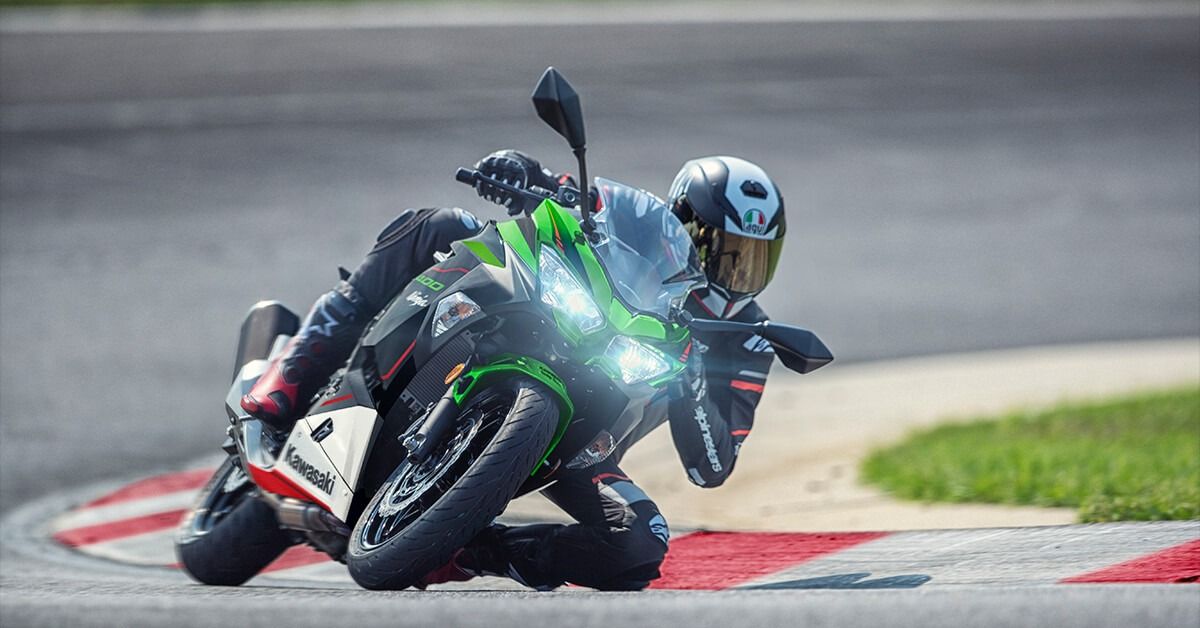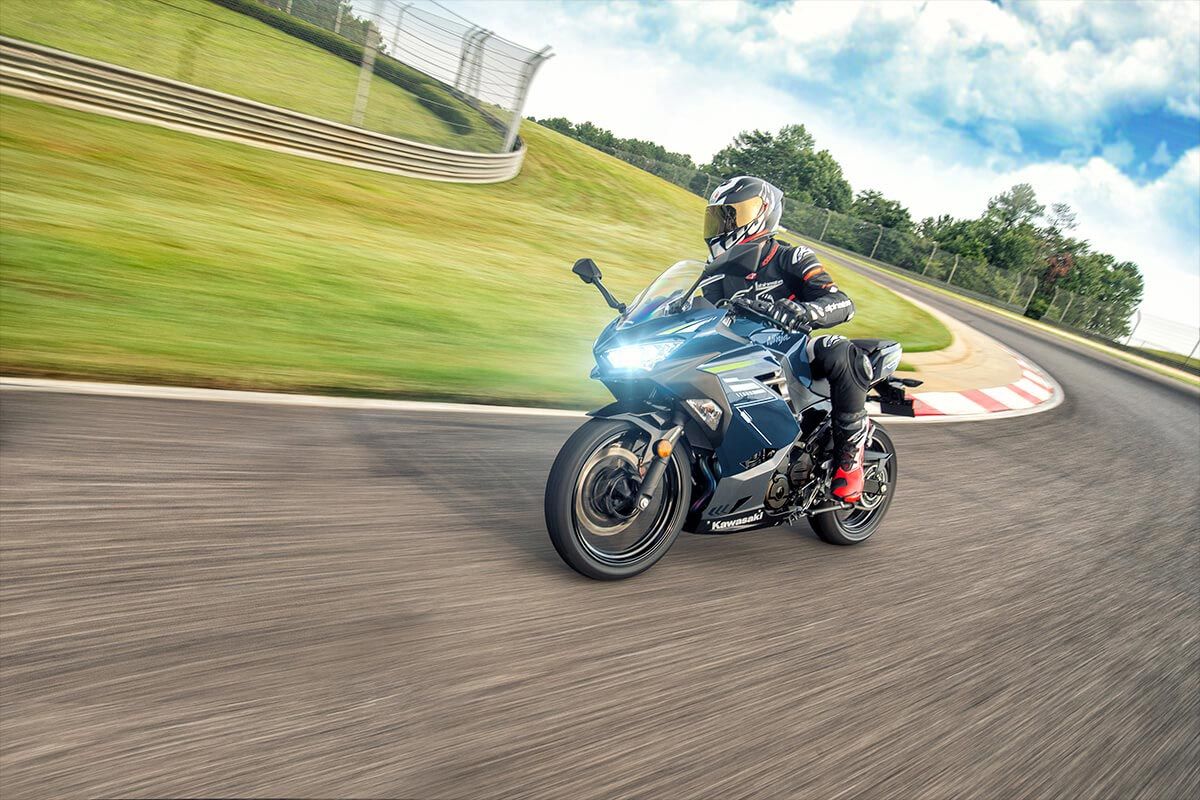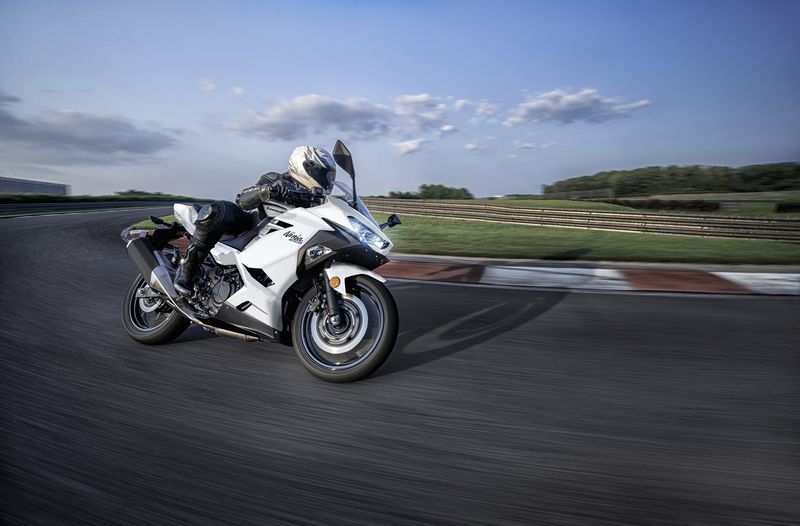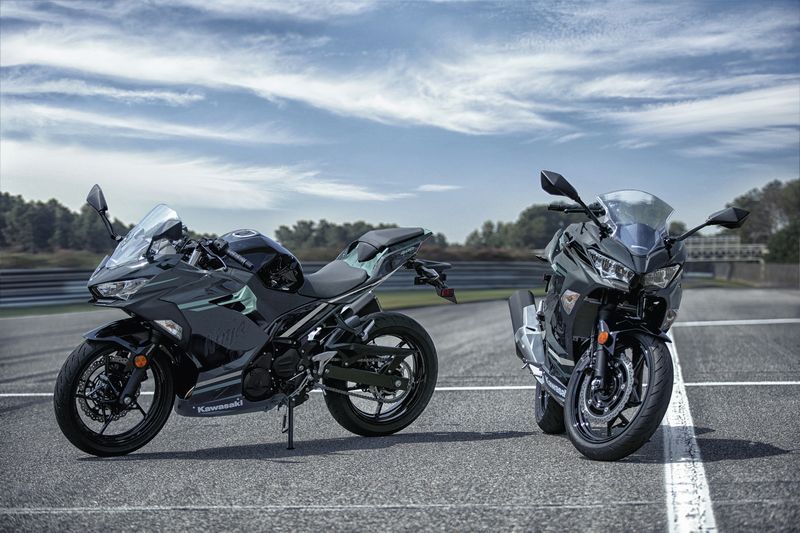An entry-level sports bike is no doubt the ticket for novice enthusiasts to immigrate to the world of speed, but it’s not all about attaining a maddening pace as manufacturers walk the tightrope while keeping a close eye on an affordable price tag, agile handling capabilities, and safety for the riders. We can acknowledge that buying a motorcycle is an emotional experience, not to mention, it also gives you the license to thrill, but the more daunting task is to choose an ideal motorcycle for you. It can be even more baffling for an amateur. This is the reason why we decode the best beginner's sports bike in the segment, the Kawasaki Ninja 400, and explain why it successfully ticks all the boxes. The Ninja series is one of the most illustrious brands in the motorcycling world starting from the H2R, the first supercharged production motorcycle to the Ninja ZX-10R, which is considered as one of the best superbikes to have ever been manufactured and now with the Ninja 400, Kawasaki is offering the big bike performance that won’t make a hole in your pocket.
There’s A New Sheriff In Town
With a 399cc liquid-cooled engine, the Ninja 400 has the biggest displacement in its segment. It’s also the only parallel-twin while its competition like the KTM RC390, Honda CBR300R and the Yamaha YZF-R3 stick to the tried-and-tested single-cylinder motor. With 44 hp at 10,000rpm and 28 lb-ft of torque at 8,000rpm available at the twist of the throttle, the new powertrain offers a meaty mid-range power, which the Ninja 300 seriously lacked. This gives the rider more usable power and making the sports bike responsive at low revs when compared to its older model where you had to rev the nuts out of it. With the horses ready to gallop, this gives you the option to cruise on the highway, negotiate urban traffic at ease or exit corners on the track with extra zing. The 399cc parallel-twin is complimented by a slick and precise 6-speed transmission with a featherweight slip-and-assist clutch, which ensures that changing gears is effortless. As expected from a Kawasaki engine, this motor is refined and remains vibe free. The Ninja 400’s deep gruff exhaust note will bring a smile to the rider’s face as it sounds more like a top tier middleweight bike.
Ninja 400: Sultan Of Swing
A bigger and more powerful engine usually means more weighty issues for the bike, but that’s not the case with the Ninja 400 as it’s around 17 pounds lighter than the Ninja 300 and weighs 366 pounds (ABS version). This also translates into a superior power-to-weight ratio, ensuring that it is more track friendly. Kawasaki has pushed the envelope in terms of agility and riding dynamics as the Ninja 400 is based on a new and lighter Trellis steel chassis, which has a steeper rake angle of 24.7º and 3.6 inches trail coupled with a shorter wheelbase. With razor-sharp handling capabilities, Kawasaki has left the riding position more or less upright, so that the Ninja 400 feels at home doing both knee and elbow downs on the track and remains comfortable on the tarmac for your everyday ride. This is a sensible move by the Japanese giant because an overly aggressive stance can be overwhelming for amateur riders rather than helping them sharpen their skills. Also, with the saddle height remaining at 30.9 inches in height, this makes it accessible for aspirant riders and easier to control, especially while blazing past corners. The Ninja 400 is nimble and stays planted on turns because of its beefy 41mm front forks and rear suspension, which are set up on firm settings along with the new wider Dunlop Supermax tires that offer additional grip.
The Kawasaki Ninja 400 Packs Quite A Punch
Kawasaki may not be known for its elegant styling, but the Ninja 400 retains its legendary mean machine image. It looks very aggressive with the twin bug-eyed LED headlights and with a massive fairing, it dwarfs the competition in this sub-400cc class. When it comes to making a bold statement, the Japanese manufacturer has got it spot on as the muscular 3.6-gallon tank is sculpted in such a way that it looks bigger than the Ninja 300’s 4.4-gallon tank. Inspired from the ZX-10R, the three-point rear LED rear light adds a dash of pedigree to it. Speaking of bigger bikes, the Ninja 400 borrows the instrument console from the Ninja 650. With an analogue rev counter on the left side and a multifunctional LCD screen on the right, Kawasaki has balanced old-school charm with modern technology. They’ve also improved the braking system with a bigger front 310mm disc.
The Ninja 400 is a value-for-money machine and is available in both non-ABS and ABS versions. The former starts at MSRP $5,199 and the latter from $5,599. Kawasaki also offers optional goodies like a 12v socket, taller windscreen, tank bag and much more.




